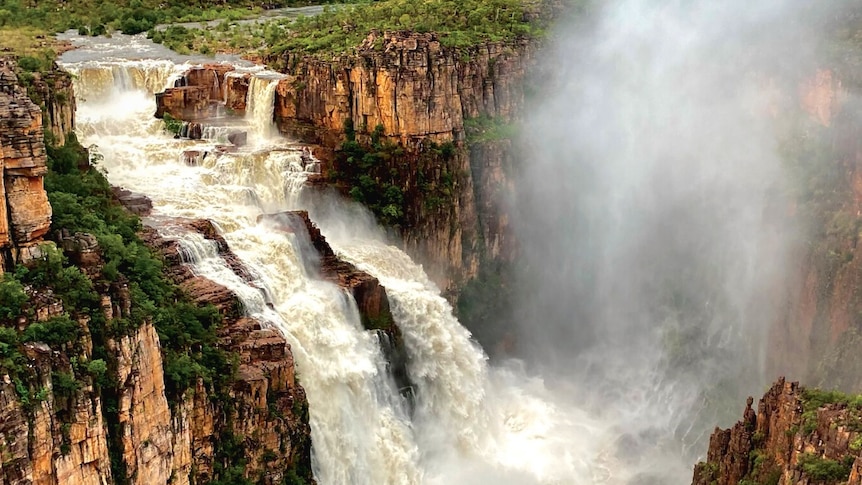Northern Australia’s wet season is likely to arrive earlier this year, according to the Bureau of Meteorology (BOM), bringing with it a higher likelihood of more tropical cyclones off coasts.
Key points:
- The Bureau of Meteorology is forecasting an early onset of rain across the Top End.
- Two powerful climate forces have at least a 50 per cent chance of forming, driving higher than average rainfall
- The prawn industry says wetter weather will hopefully drive a bumper harvest next year
Much of south-eastern Australia has been impacted by record-breaking floods as a result of La Nina, while the north of the continent recorded decent rainfall totals during the last wet season.
Now the weather bureau has officially declared another climatic phenomenon — known as the negative Indian Ocean Dipole — that’s expected to add to recent unrelenting rain on the east coast.
The weather system is also predicted to lead to wetter weather across the Top End of the Northern Territory and Far North Queensland. However, parts of northern Western Australia are likely to remain somewhat drier.
Northern Australia’s wet season typically runs from December to April, following a build up of hot and humid conditions from October.
The weather bureau measures how early or late the rainfall onset is by how long it takes for rain gauges to record 50mm after the start of September. Typically, gauges hit the 50mm threshold in Darwin in late October.
“There is a high chance of getting to 50mm from the 1st of September potentially by early October or maybe even late September,” the BOM’s senior forecast Moses Raico said of this year’s conditions.
The culprits are vast climate drivers across the Pacific and Indian Oceans, including the La Nina, responsible for much of the east coast’s wet weather so far this year.
The BOM is predicting a 50:50 chance of La Nina forming for a third straight summer, however Mr Raico said it was actually a negative Indian Ocean Dipole that was more likely to influence rainfall in northern Australia.
He said this was when “waters across the eastern side of the [Indian Ocean] basin are warmer than compared to what’s over on the western side.”
“The combination of those warmer waters, and if we also get La Nina called later on, it could help contribute to seeing wetter conditions than what we’d expect, which would contribute to a greater chance of a rainfall thresholds being met.”
Earlier rain, more potential cyclones
Each year, the monsoon arrives at roughly the same time. In Darwin, drenching rains typically begin between Christmas and New Years.
But Mr Raico said the combination of a La Nina and a negative Indian Ocean Dipole could bring the monsoons forward to sometime earlier in December.
“The exact timing though, it’s a bit hard to actually pin point,” he said.
“Definitely, if that were to take place and we do see those warmer sea surface temperatures, then that generally would play out with potentially greater than average tropical cyclones in the season.”
Typically, a negative Indian Ocean Dipole and La Nina triggers higher than average rainfall across northern Australia during its wet season.
But the BOM, in its report wrapping up the 2021-22 wet season, acknowledges this wasn’t entirely true.
“The 2021–22 La Nina was conducive to the early start to the wet season and above average rainfall until January 2022,” the BOM said.
“However, somewhat atypically for a La Nina, many areas of northern Australia were drier than average from February to April 2022.”
Rainfall good news for some
Increased wet weather might bring to a premature end the Northern Territory’s bumper tourism season, which runs through the dry.
But those likely to benefit include prawn fishers, whose benefits greatly from rainy conditions.
Australia Bay Seafoods general manager Michael O’Brien said 16 boats had already gone out into the Gulf of Carpentaria in the past week for the tiger prawn season.
“[The forecast] is great news for us because our banana [prawn] season, which is the first half of the year, is totally related to the amount of rain we get to flush the rivers out,” he said.
Mr O’Brien said rains flushed “the rivers out with all the smaller prawns so they can go out and grow”.
“Our prawns will be bigger, which is good for everybody – good for the market, good for us and good for the consumer that’s going to eat big prawns.”
.

